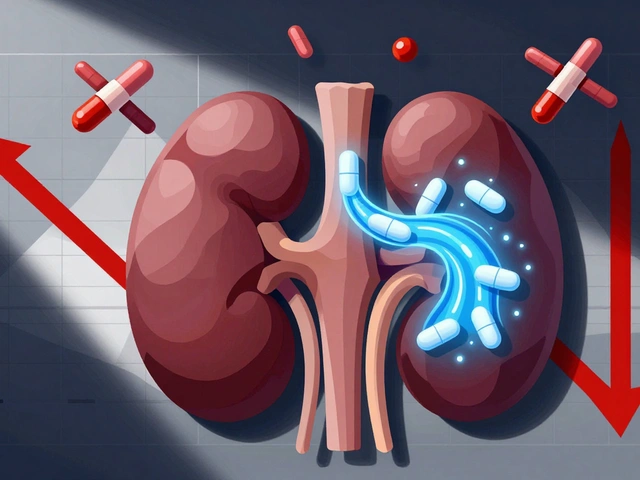Antibiotic Side Effects: Understanding Risks and Management
When dealing with antibiotic side effects, unwanted reactions that can occur while taking antibiotic medications. Also known as adverse antibiotic reactions, they range from mild stomach upset to serious allergic responses. These effects are closely tied to the antibiotics, drugs designed to kill or inhibit bacterial growth prescribed for infections. Because antibiotics interact with the body’s microbiome, the community of harmless bacteria living in the gut and elsewhere, disruptions can lead to diarrhea, yeast overgrowth, or reduced immunity. Antibiotic side effects often depend on the drug class, dosage, and individual health, so recognizing patterns—like a sudden rash after a penicillin dose or nausea when taking a fluoroquinolone—lets you act fast. The relationship is simple: antibiotic use influences microbiome balance, and an imbalanced microbiome amplifies gastrointestinal upset. In short, if you know which antibiotics tend to cause which reactions, you can separate the predictable from the alarming.
Another key piece of the puzzle is drug interactions, how one medication changes the effect of another. Certain heart medicines, blood thinners, or even over‑the‑counter supplements can magnify the intensity of antibiotic side effects. For example, taking a macrolide antibiotic together with a statin may raise the risk of muscle pain, while combining a sulfa drug with warfarin can boost bleeding tendencies. These interactions illustrate the semantic triple: drug interactions amplify antibiotic side effects, which in turn can trigger additional health concerns. When you start a new antibiotic, it’s wise to list every prescription, supplement, and herbal remedy you use—your pharmacist can spot hidden synergies before they become problems. Monitoring signs such as unexpected bruising, severe headaches, or prolonged diarrhea helps you catch an interaction early and seek a safer alternative.
Beyond immediate reactions, long‑term exposure to antibiotics can drive antibiotic resistance, the ability of bacteria to survive despite drug treatment, a public‑health issue that feeds back into side‑effect profiles. Resistant strains often require stronger or combination therapies, which bring a higher chance of side effects like kidney strain or hearing loss. Knowing this loop—antibiotic use influences microbiome balance, microbiome changes affect resistance patterns, and resistance shapes future side‑effect risks—empowers you to ask your doctor about narrow‑spectrum options or shorter courses when appropriate. Below you’ll find a curated set of articles that break down common reactions, how to differentiate harmless from hazardous, and practical steps to protect your gut while staying on track with infection treatment. Dive in to get the details you need for safer antibiotic use.

Norfloxacin vs Alternatives: Which Antibiotic Is Right for You?
Compare Noroxin (Norfloxacin) with common alternatives, explore uses, side‑effects, costs and how to pick the best antibiotic for your infection.
read more




